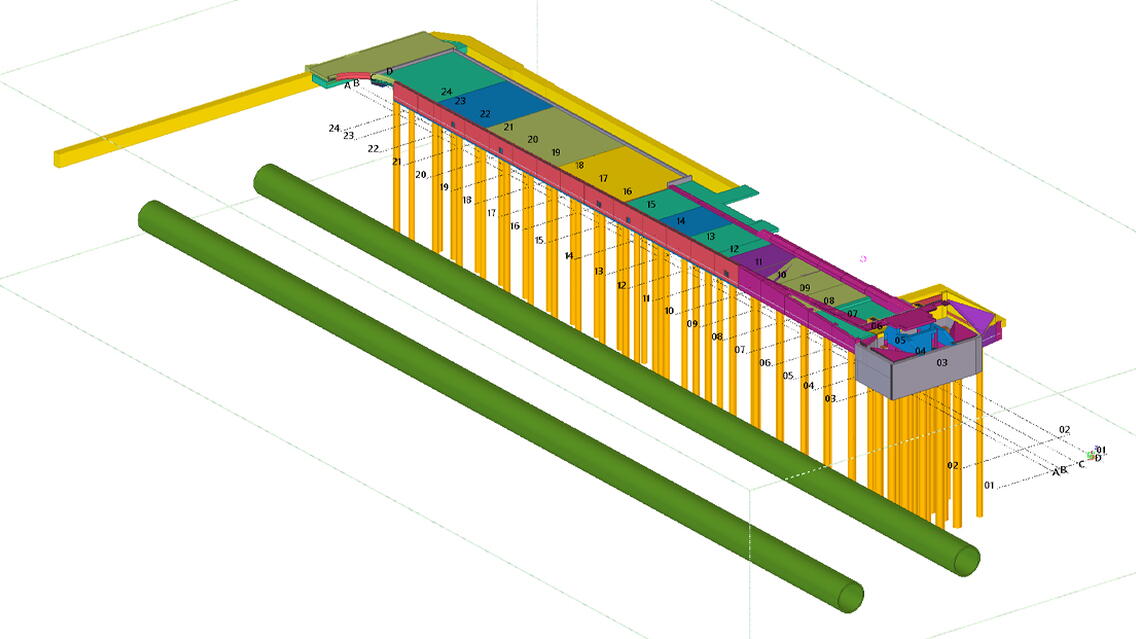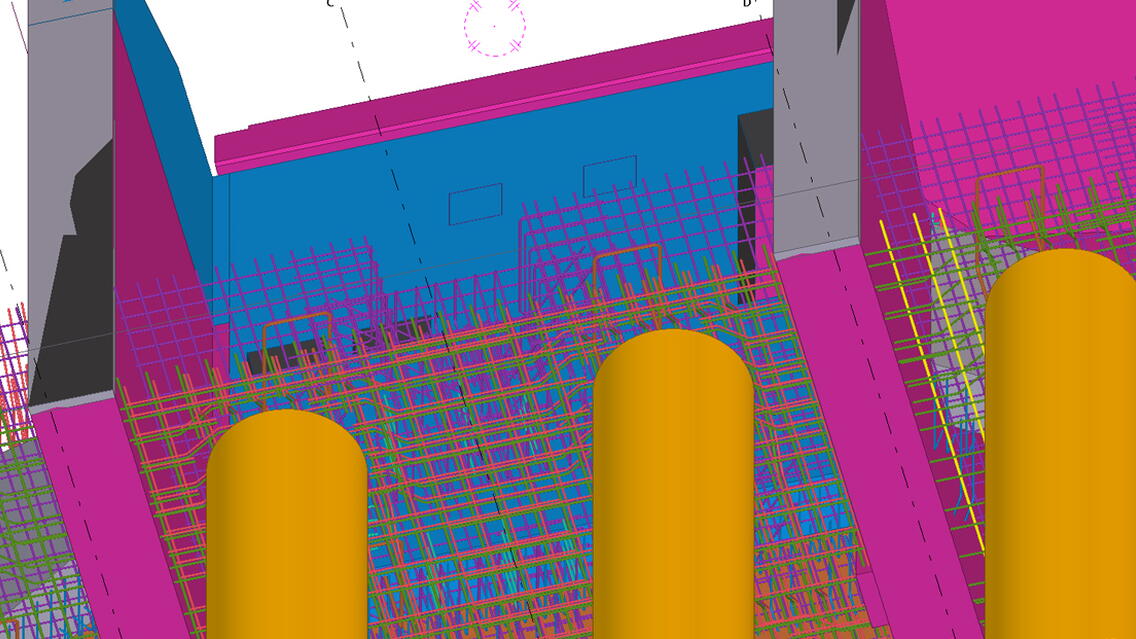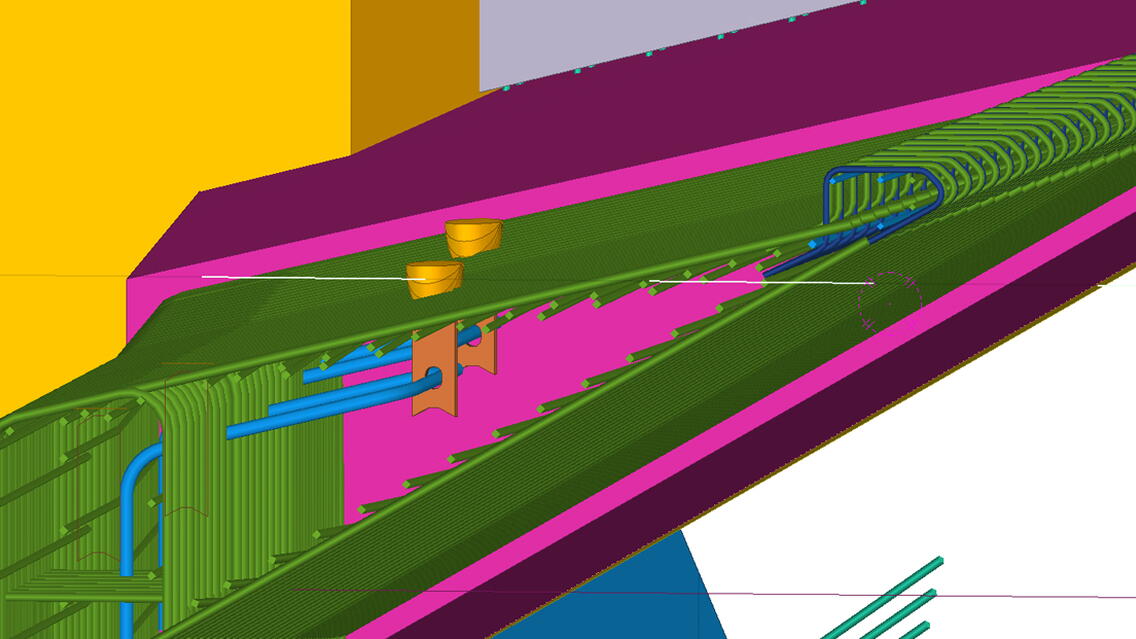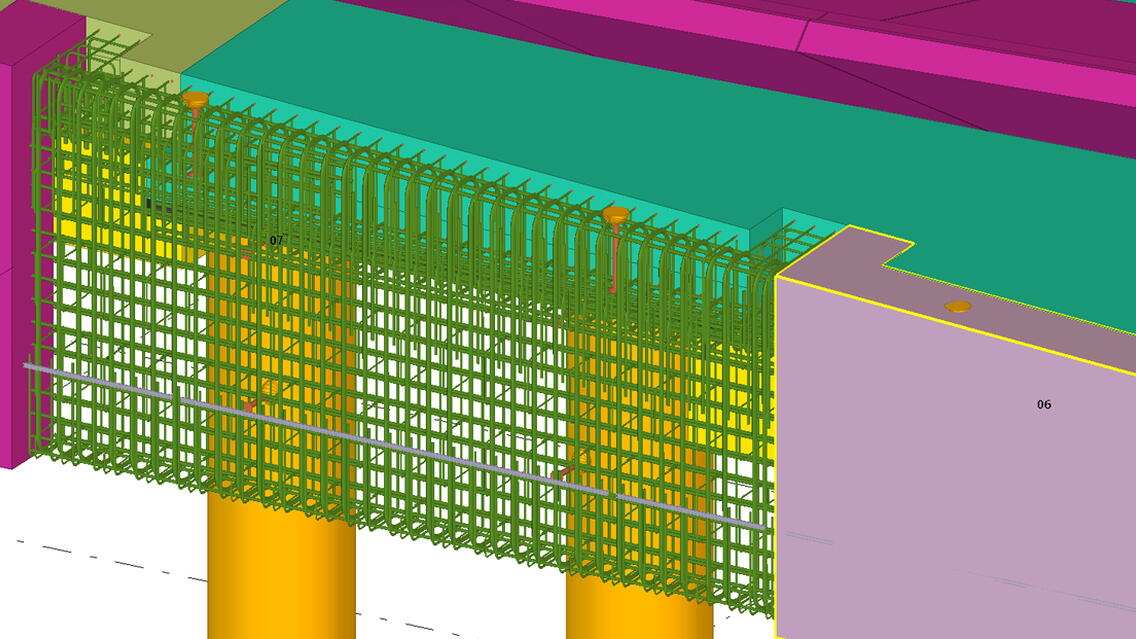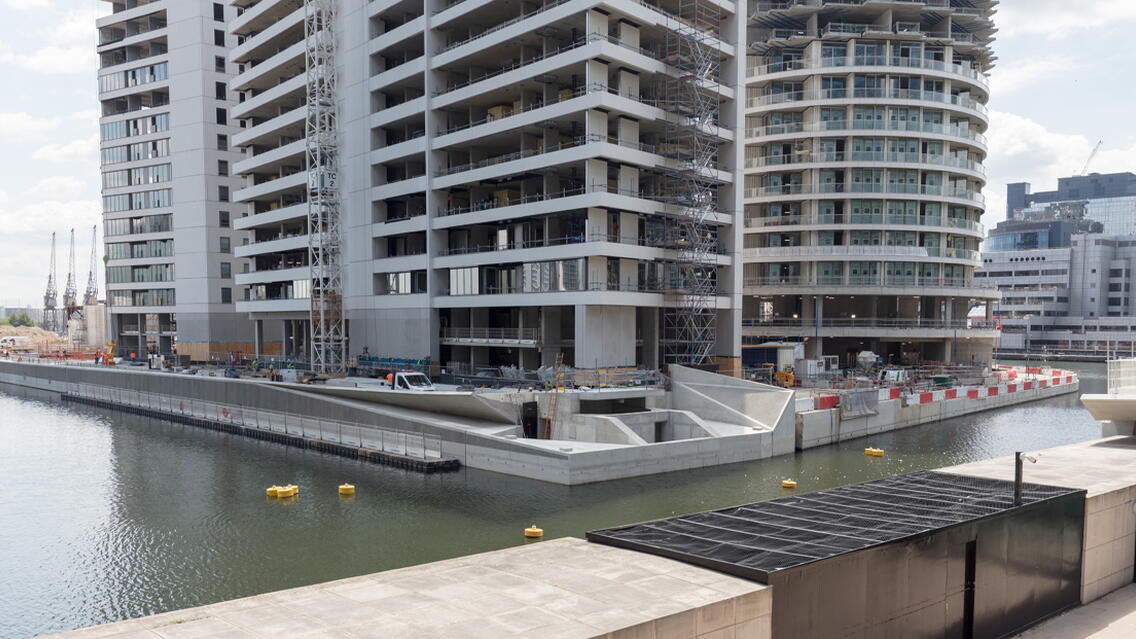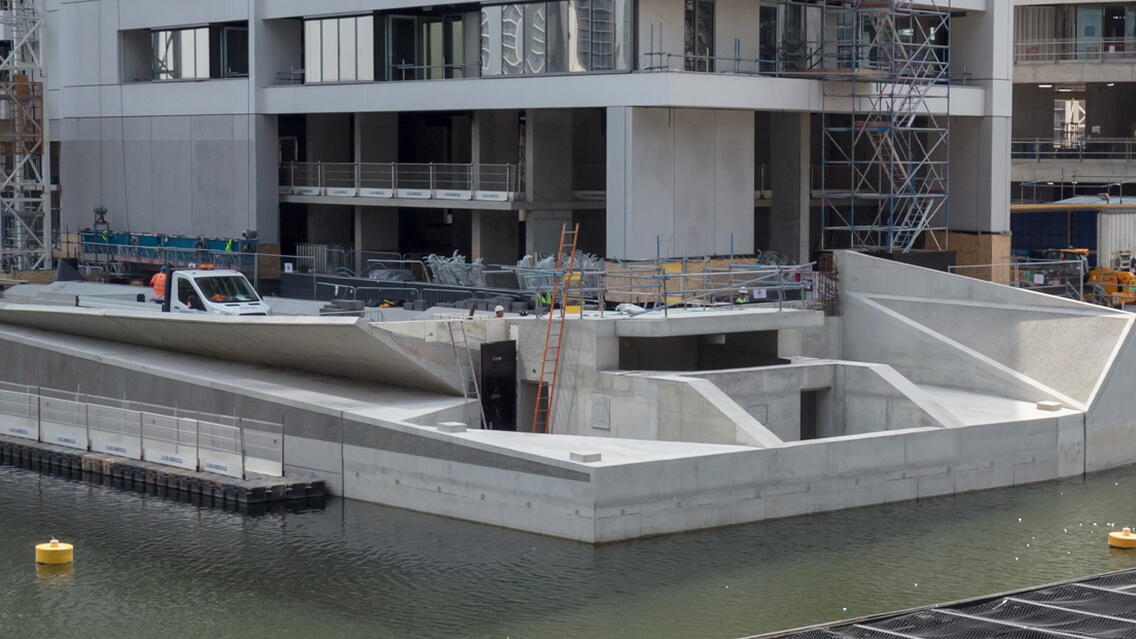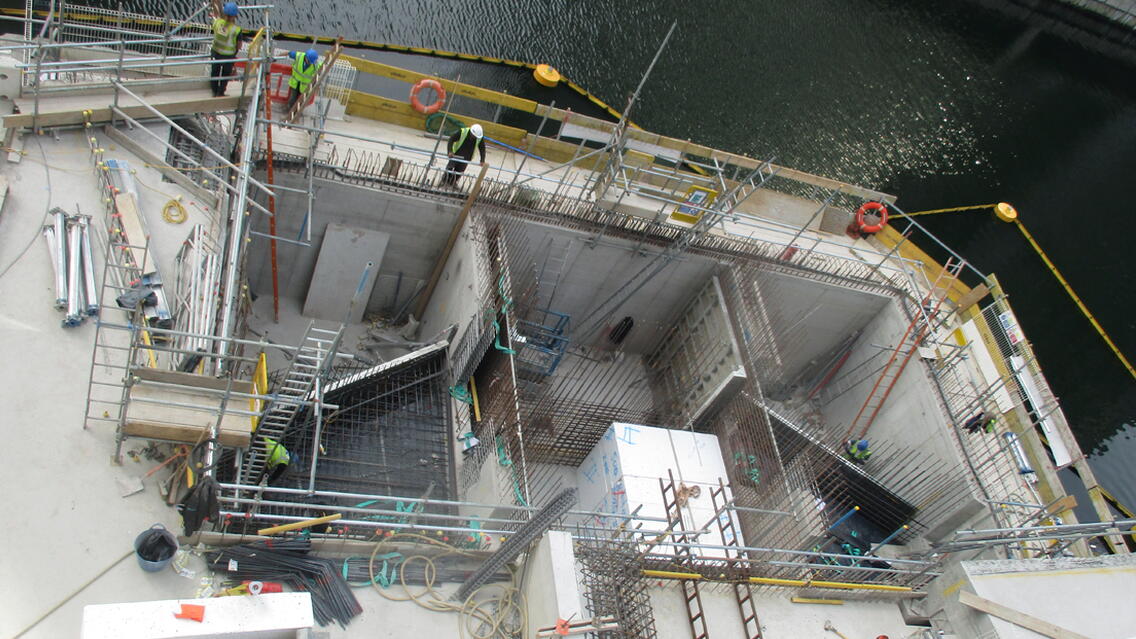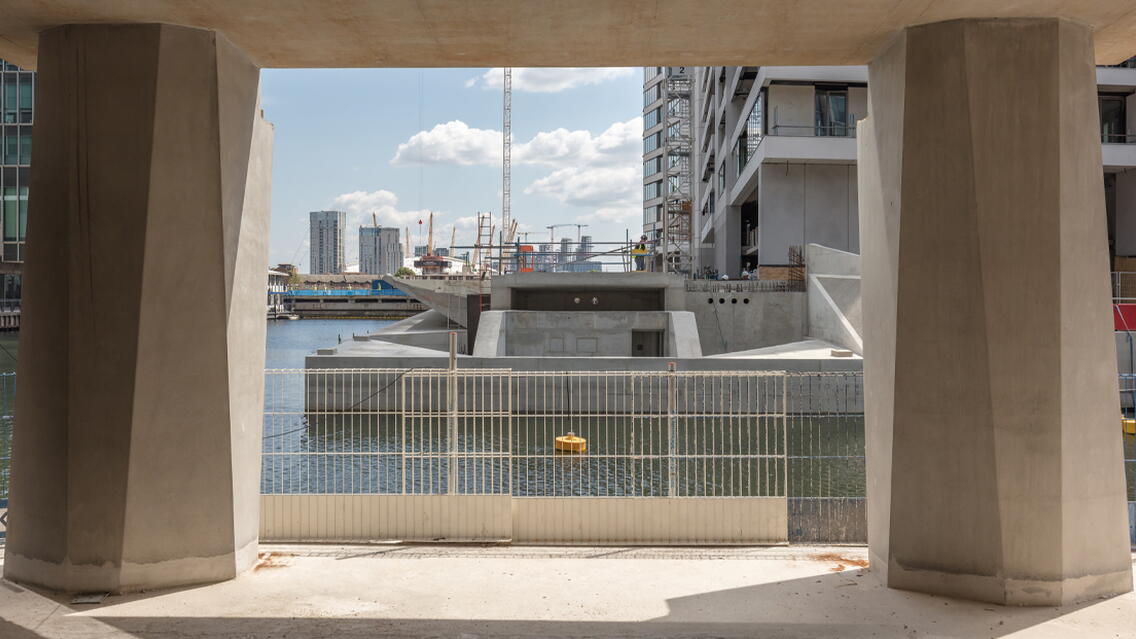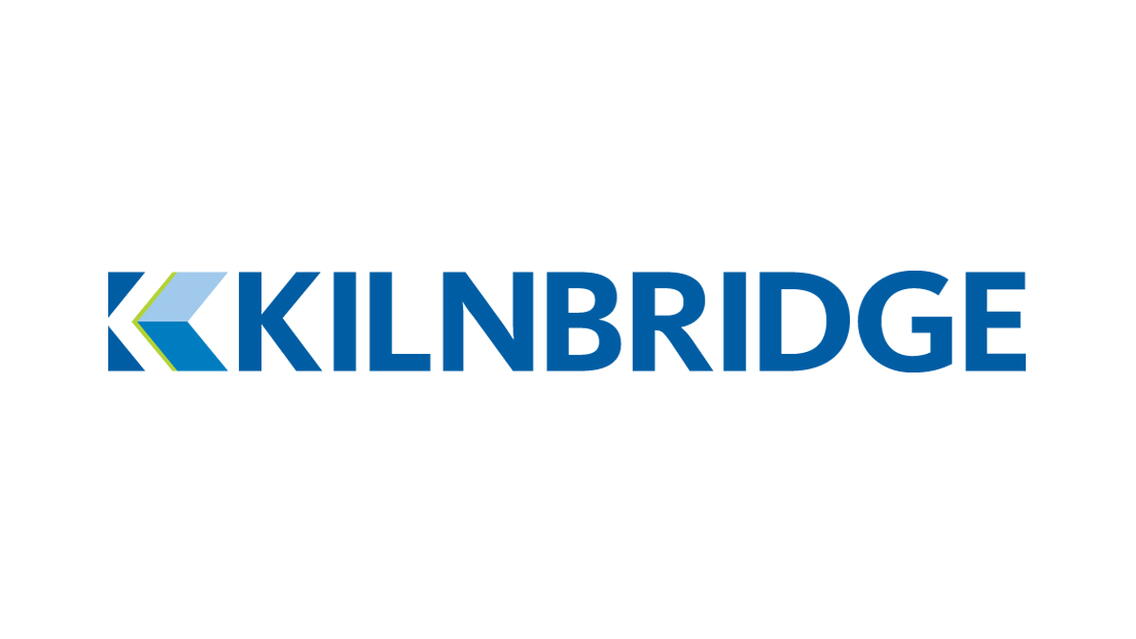The construction of the new Water Street Bridge provides both a road and pedestrian link between Montgomery Square within the existing Canary Wharf estate and the new Wood Wharf Development. The bridge itself consists of a single leaf bascule bridge, weighing 185t and spanning 26.7m over the Bellmouth Passage, part of the former West India Dock, between the pivot point within the East Abutment bascule chamber and the nose bearing on the West Abutment.
The West Abutment consists of a number of vertical structures supported on bearing piles through the existing promenade, notably two feature concrete columns supporting the bridge elastometric bearings. The approach deck spans over existing LUL property, with a lift out element to allow for emergency access to the structure below.
The East Abutment is a semi-submerged concrete structure founded on 1200mm diameter bored marine piles, with permanent steel casings sealed into the Lambeth Beds below. This comprises external walls between 400mm and 600mm thick with two 650mm thick internal walls supporting the Pivot Bearing. A 1350mm thick concrete slab then supports the lifting cylinder and a number of high-level slabs on foam concrete to provide a plant room area, capped by a sloped approach slab to the bascule bridge.
The Marine Causeway structure adjacent to this runs alongside the existing marine deck structure of the Wood Wharf development, consisting of bored marine piles supporting transverse precast beams at typically 5400mm centres. Precast planks then span between the beams providing permanent formwork and acting compositely with the insitu slab, with an overall slab depth of 400mm. Precast parapet units run along the length of the causeway supported on the transverse beams with discrete shear keys cast into the concrete slab.
Kilnbridge were appointed by Canary Wharf Contractors Ltd to construct the concrete structures for both of the Abutments and the Marine Causeway, as well as developing the methodology and temporary works for the project, on a fixed price lump sum contract.
Planning of the detailing for the marine causeway was driven by the lifting capacity of the crawler crane to be utilised for the project, requiring Kilnbridge to change the design of the finished edge parapet units to a twin wall style system with an infill strip to enable ease of lifting and construction. Further complexity was added with the detailing required for the East Abutment structure, which was to be constructed above the water level before being lowered into place and then completed, with a number of temporary reinforcing bars to suit the change in the structural loading.
What were the challenges and what made the project successful.
The finished product of the Marine Causeway and East Abutment, seen within the submitted images, provides an understated and simple appearance, but the bespoke structural details and construction techniques involved belie this. By combining techniques from across the industry, a construction solution was developed that fulfilled and often exceeded the client's requirements ensuring safe and efficient working throughout the project. Careful planning and trials ensured the success of the novel solutions employed for the project and delivery of the challenging project, with complex reinforcing and concrete interfaces.
The challenges overcome and solution have been recognised by the industry through the award of the British Construction Industry Temporary Works Initiative of the Year (Civil Engineering) Award 2018, commendation for the CONSTRUCT Project of the Year (over £2.5million) Award 2018 and short listing for Construction News Project of the Year by a Specialist Contractor (£3million to £5million) Award, with the latter yet to be awarded.
Ensuring that a tight programme could be achieved with a limited three month pre-construction lead-in period requiring accelerated design and detailing for the precast elements that could be co-ordinated with the insitu elements to follow. The success of this ensured that the project was delivered ahead of the key hard deadline for the bascule bridge installation and within budget despite the technical challenges and bespoke nature of the project.
What benefits utilizing BIM and Tekla Software brought to the project.
Given the hybrid nature of the structure, combining insitu concrete, precast concrete, finished concrete and temporary works elements, co-ordination and development of the solution within the limited time frame was aided immeasurably by the use of BIM and notably Tekla. An animation of the construction programme based on the model was produced to provide a visual tool for the operatives during the inductions and site briefings to ensure that all were aware of the sequence of works and key deliverables.
The production capabilities and the ease of change control allowed within Tekla was exemplified when only two weeks prior to a key element of the works being constructed, the permanent works engineer realised that they had not correctly accounted for the loading from a ship impact and required substantial changes in the reinforcement. This was incorporated within the model, clash checked and the corresponding drawings and schedules generated within only two days to enable a short approval period for reinforcement to be delivered to site on time and the maximum re-use of previously ordered reinforcement from the now defunct design. This enabled us to achieve our deadline for the lowering of the East Abutment structure and did not impact the overall construction programme.
In addition to this, all structural steelwork for the temporary works was model, detailed and scheduled from Tekla by our fabrication department also enabling a comparison of geometry for the clash detection prior to installation.
The project in numbers
Length of Marine Causeway - 110m. Reinforcement Tonnage - Circa. 300 Tonnes.
